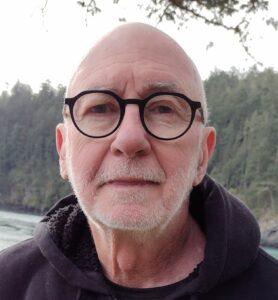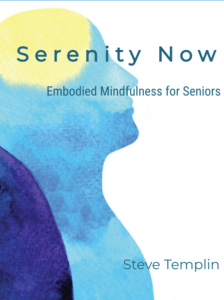Life is challenging and even more so for HSPs who think, feel, and process experience more deeply.
While sensitivity is a gift once certain navigating skills are learned, the learning process usually involves first getting lost.
It’s easy to get lost and even easier to lose yourself when you don’t know how to navigate. It’s easy to feel overwhelmed and the nervous system that controls your overall health and well-being becomes overwhelmed and dysregulated as well.
When the autonomic nervous system (ANS) becomes imbalanced we can experience pain or illness on any level. Traditionally the symptoms that reflect this imbalance were and continue to be treated medically.
With our new understanding that many if not most symptoms are signs of an imbalanced nervous system, we can address the ANS directly with self-regulation strategies to either complement or replace medications.
So we can become sick enough that we’re compelled to look for a new way to navigate that’s a better fit for our needs and temperament. This new path requires an inward turn of awareness.
The Shift from Head to Heart
Moving from head to heart is ultimately how we find our way. And it’s not an easy way.
When I say ‘head’ I’m referring to that part of us that we can call the ego that’s adapted to life’s challenges to survive but not necessarily thrive. It’s quite possible that our unconscious programming from family and culture is not serving our true needs and temperament and need to be updated.
Gary Zukov, in Seat of the Soul, relates the story of his adopted Native American grandfather. Grandfather tells him that the greatest journey he will make in his life is that distance from his head to his heart. I know that’s been true for me and many of the people I’ve worked with.
In Dr. Sarno’s mindbody approach to successfully treating chronic back pain with expressive writing, rather than with injections or surgery, he revealed that only twenty percent of his prospective patients found his diagnosis and treatment suggestions meaningful. His research demonstrated that the shift from head to heart, from thinking to feeling, is a vulnerable path that is resisted by most.
This isn’t surprising when you’re aware that only twenty percent of the population are HSP’s. These are individuals with the sensitivity and awareness that can make sense of a mindbody diagnosis.
So the HSP is more likely to suspect that a mindbody approach makes sense while a less sensitive person just doesn’t make the connection.
Moving into the heart involves letting go of what we’ve been programmed to believe about ourselves, others, and life by family and culture. This can be very foreign territory.
Joseph Campbell, the mythologist, called this inner path of emotional experience and self-reflection the hero’s journey. That should give us an idea of how challenging and special this process truly is. It’s not a path for everybody.
If anyone was cut out for this perilous journey it’s the HSP.
You can’t ‘think’ your way to the new world of your heart and authentic self, but with the help of your body’s wisdom you can feel and sense your way. This journey requires vulnerability and the sensitivity and awareness to follow the signs that were meant for you and you alone. Yep, the hero’s journey.
While painful symptoms may initially fuel this inner journey, what sustains it is the satisfaction of discovering who you truly are, beyond all of the familial and cultural conditioning that has obscured your essence.
Here’s some helpful science. When you ‘feel’ what’s going on for you on the inside, for example, a tight shoulder, a heartbeat, or a sad lump in your throat you’re activating a healing process. When you become curiously aware of your inner experience that is a process called interoception. Interoception is the inner act of awareness that brings order to your brainwaves and autonomic nervous system for reversing what stress and trauma have done to you, both emotionally and biologically.
The newer and often more effective approaches to treating PTSD involve an awareness of the body because thinking or talking about trauma alone doesn’t reach deep enough in the brain to resolve the neurological impact of trauma. Thinking alone doesn’t go deep enough. Here’s where interoception becomes a serious self-healing tool.
Let’s Practice Some Interoception
I’ll offer some examples and you can see what you like or what works best.
Important Note: Almost all change is resisted because we’re moving from the known to the unknown. So be aware of any judgments or inner critical voices that accompany any self-awareness exercises. Do your best to simply acknowledge those things. If you’re aware, curiously aware, those limiting parts of you will lose power over time.
Let’s do some interoception. Eight courageous and vulnerable steps towards your heart and a healthier and more authentic you.
Give yourself a good 15 seconds or more to process each step as gently, patiently, and curiously as you can. Effortless noticing is the key. On the other hand, trying to hard or rushing will block the process and increase anxiety or pain.
1. Sit comfortably and close your eyes (only if closing your eyes is okay).
2. Notice your tush pressing into your seat. (Brainwaves are beginning to change)
3. Take a breath and let it go.
4. Notice that your body occupies space …. a three-dimensional space. (Noticing space creates an alpha brainwave)
5. Notice or feel the space you’re surrounded by in your room. (more alpha waves)
6. Imagine breathing right into the front of your heart, more slowly than normal. (Now you’re shifting ANS balance and creating more heart rate variability HRV)
7. Bring to mind someone or something you love while you breathe slowly into your heart. (more HRV and priming the pump for insight, clarity, and intuition)
8. Imagine experiencing the sensations and feelings emanating from your body as patterns of energy occupying space …. that you (Awareness) can merge into. (Remember that physicists are informing us that all matter is composed of atoms and that atoms are 99.9% empty space.
Yep, reality isn’t what we think. And while most of us can’t do the physicist’s math, we are equipped to experience space directly and with profound benefit.)
Yes … that’s right. You are Awareness itself. The more that you practice being aware, curiously aware, the more you begin to identify with your true Self …. Awareness.
Noticing space, the invisible immaterial space that underlies all of the material world …. rather than things that can be named …. is a time tested process of shifting from head to heart, and ego to Self.
Ancient meditative methods as well as modern neurofeedback practice both validate the felt awareness of space as a profound state changer.
Our Self has often been obscured by life’s burdens, by the heavy shadow of ego. Our Self is that spark of divinity that connects us to all that is through our heart. My thoughts here are based on my personal experience, work with others, and a seventy-year-old’s bet that flesh isn’t the final frontier.
You can practice any of these awareness steps, or others if you prefer, at intervals throughout the day. Ten seconds here, thirty seconds there, whenever you finish reading a paragraph or washing a dish will work just fine.
The more we take these mini awareness breaks the more likely we’ll break the spell that our familial and cultural conditioning holds over us.
(Get your free ebook, Your Highly Sensitive Brain and Chronic Pain, below.)


 Steve is a retired Doctor of Oriental Medicine, Acupuncture Physician, and HeartMath Trauma-Sensitive Certified Practitioner with over 35 years of clinical experience in the fields of Energy Medicine, Energy Psychology, and Biofeedback.
Steve is a retired Doctor of Oriental Medicine, Acupuncture Physician, and HeartMath Trauma-Sensitive Certified Practitioner with over 35 years of clinical experience in the fields of Energy Medicine, Energy Psychology, and Biofeedback. 